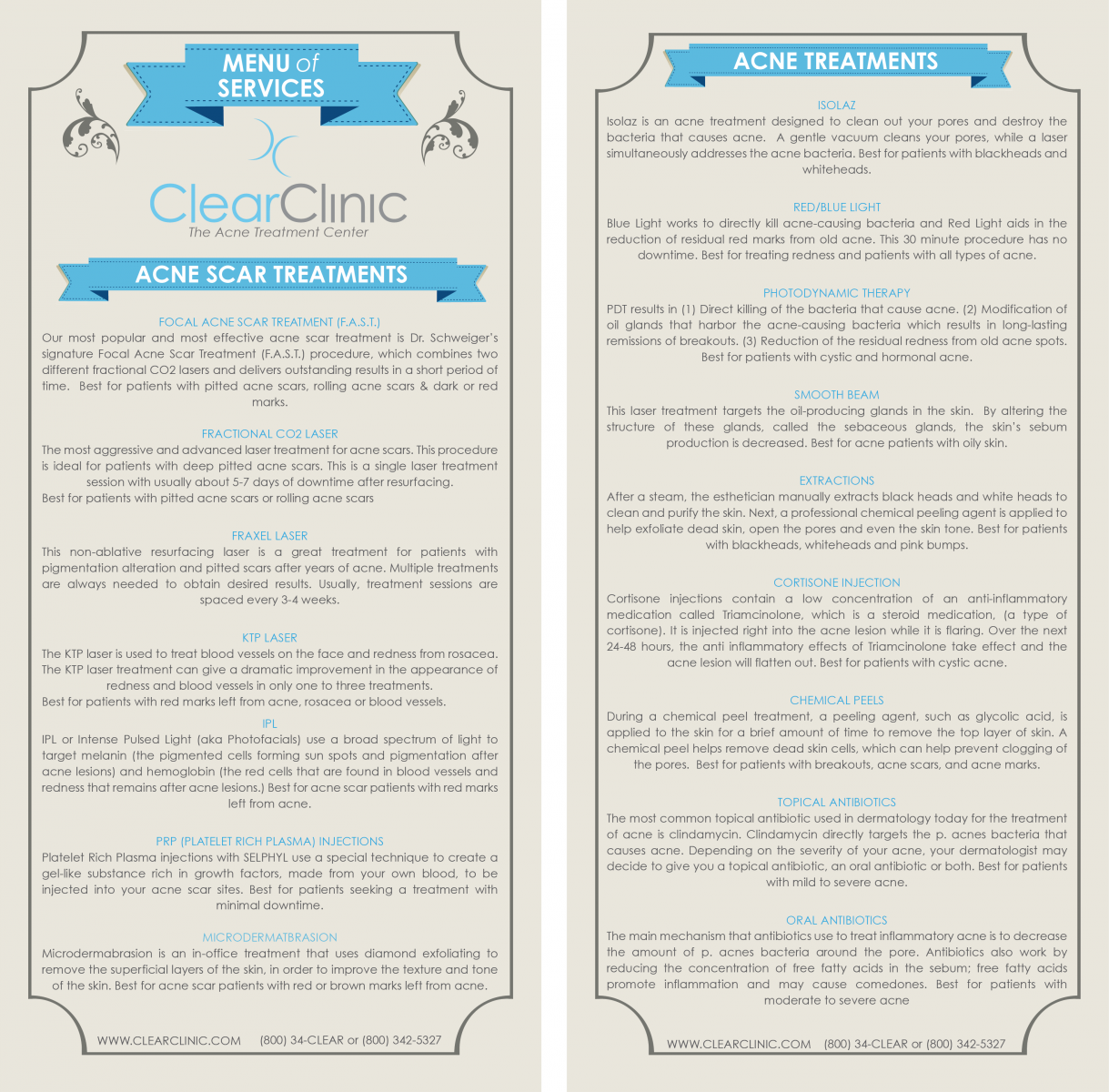Having clear, acne-free skin is possible with the help of some amazing in-office procedures, such as chemical peels. A chemical peel is a procedure performed in a doctor’s offices with the goal of improving acne, acne scars, and marks from previous acne breakouts. During a chemical peel treatment, a peeling agent, such as glycolic acid or salicylic acid, is applied to the skin for a brief amount of time to remove the top layer of skin. A chemical peel helps remove dead skin cells, which can help prevent clogging of the pores. There are several chemical peels used for acne treatment, including Jessner’s Peel, glycolic acid peels and salicylic acid peels, all are used for the treatment of acne and acne scarring. There is not a “best” chemical peel, but different peels that work best for different patients. Chemical peels can be used both to improve active acne and also help reduce acne scars. Our favorite chemical peels for acne are the Jessner’s Peel and 30% salicylic acid peels.
What is a Jessner’s Peel?
A Jessner’s Peel is a solution combining resorcinol, lactic acid and salicylic acid all in one, in order to treat both acne and the post-inflammatory hyperpigmentation (brown spots) left behind from old acne lesions. It is performed as a series of treatments in the office, generally at one-month intervals. The amount of Jessner’s Peels required for each patient depends on the skin type and condition being treated.
Are Chemical Peels covered by insurance?
Blue Cross Blue Shield does cover some checmical peels for acne. Your medical provider can decide if your acne needs meets the requirements for medical necessity you may be eligible for treatment of acne and marks left by old acne by chemical peels.
Are Jessner’s Peels safe for all skin types?
Jessner’s Peels are safe for all skin types. These in-office chemical peels can be tailored to treat all skin types and skin colors safely. Many patients with darker skin types experience residual marks after their acne has resolved called “post-inflammatory hyperpigmentation,” which are brown spots that remain after the acne lesions have cleared. They are like “ashes after a fire.” The fire was the acne and the ashes are the marks that were left behind. Jessner’s Peels are a safe and effective treatment option for these patients.
How long does a chemical peel take?
The length of times it takes to have a chemical peel varies by the type of chemical peel performed and the skin type of the patient having the peel. Most peels last a few minutes, though some chemical peels take only seconds and some chemical peels take hours to complete.
What is the downtime after a chemical peel?
Some patients do not experience any downtime after a chemical peel, although most patients experience mild redness and peeling. Every type of chemical peel is different; some chemical peels are designed not to have any downtime, and some have significant downtime. The most common peels used for the treatment of acne have just a few days of mild redness and peeling.
Do chemical peels hurt?
Some chemical peels cause a stinging or warm sensation on the skin for a few minutes, but chemical peels do not hurt. Ice is often applied immediately after the peel to cool down warm sensation.

